
MORE THAN TWO MILLENNIA ago, a richly outfitted Celtic woman was buried beneath a massive stone tumulus along the River Seine at a site known as Vix, in the Burgundy region of central France. Laid on a wagon whose wheels had been removed and propped up against the tomb's eastern wall, the woman's body was adorned with luxurious bronze jewelry and ornaments made of jet, amber, and coral. An intricately crafted gold torc with globe-shaped terminals at both ends, each decorated with a lion's foot and the winged horse Pegasus, was placed around her neck. Also in her grave were objects imported from across the Mediterranean and Baltic regions, including a five-foot-tall Greek bronze krater used for mixing wine and water. The vessel's surface was decorated with warriors in horse-drawn chariots, its handles with Gorgons' heads, and the top of its lid with a figure of a woman. The krater is the largest metal vessel known from the ancient Mediterranean.
This high-status woman's grave was first discovered in December 1952, and was partially excavated in January and February 1953 by amateur archaeologists. During this especially wet winter, snow and rain left the ground covered in frost and the burial itself was deluged with water. The men worked hurriedly, digging a trench that led straight to the mound's central chamber, where the woman, who came to be known as the Lady or Princess of Vix, was buried. Aside from some photographs of the artifacts, including the krater and torc, and a plan of the burial chamber recording the placement of the objects and most of the woman's skeleton, the excavators did not document their work in detail. They reported their finds to French cultural authorities but did not explore the rest of the burial monument, which had been mostly dismantled and mined for its stone by the first century A.D.
This story is from the {{IssueName}} edition of {{MagazineName}}.
Start your 7-day Magzter GOLD free trial to access thousands of curated premium stories, and 9,000+ magazines and newspapers.
Already a subscriber ? Sign In
This story is from the {{IssueName}} edition of {{MagazineName}}.
Start your 7-day Magzter GOLD free trial to access thousands of curated premium stories, and 9,000+ magazines and newspapers.
Already a subscriber? Sign In
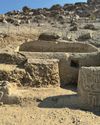
ORIGINS OF PERUVIAN RELIGION
While investigating looters' holes at the site of La Otra Banda in northern Peru's Zaña Valley, archaeologist Luis A. Muro Ynoñán of the Field Museum and the Pontifical Catholic University of Peru spotted carved blocks around seven feet below the surface.

ISLAND OF FREEDOM
Many of the enslaved Africans sent to Brazil beginning in 1549 were from what is now Angola, where one of the most widely spoken languages was Kimbundu.
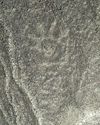
NAZCA GHOST GLYPHS
From the 1940s to the early 2000s, geoglyphs were discovered in the Nazca Desert of southern Peru depicting animals, humans, and other figures at the rate of 1.5 per year.

COLONIAL COMPANIONS
The ancestry of dogs in seventeenth-century Jamestown offers a window into social dynamics between Indigenous people and early colonists.

BAD MOON RISING
The British Museum houses around 130,000 clay tablets from ancient Mesopotamia written in cuneiform script between 3200 B.C. and the first century A.D.
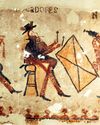
DANCING DAYS OF THE MAYA
In the mountains of Guatemala, murals depict elaborate performances combining Catholic and Indigenous traditions
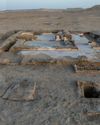
LOST GREEK TRAGEDIES REVIVED
How a scholar discovered passages from a great Athenian playwright on a discarded papyrus

Medieval England's Coveted Cargo
Archaeologists dive on a ship laden with marble bound for the kingdom's grandest cathedrals

Unearthing a Forgotten Roman Town
A stretch of Italian farmland concealed one of the small cities that powered the empire
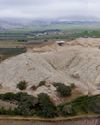
TOP 10 DISCOVERIES OF 2024
ARCHAEOLOGY magazine reveals the year's most exciting finds